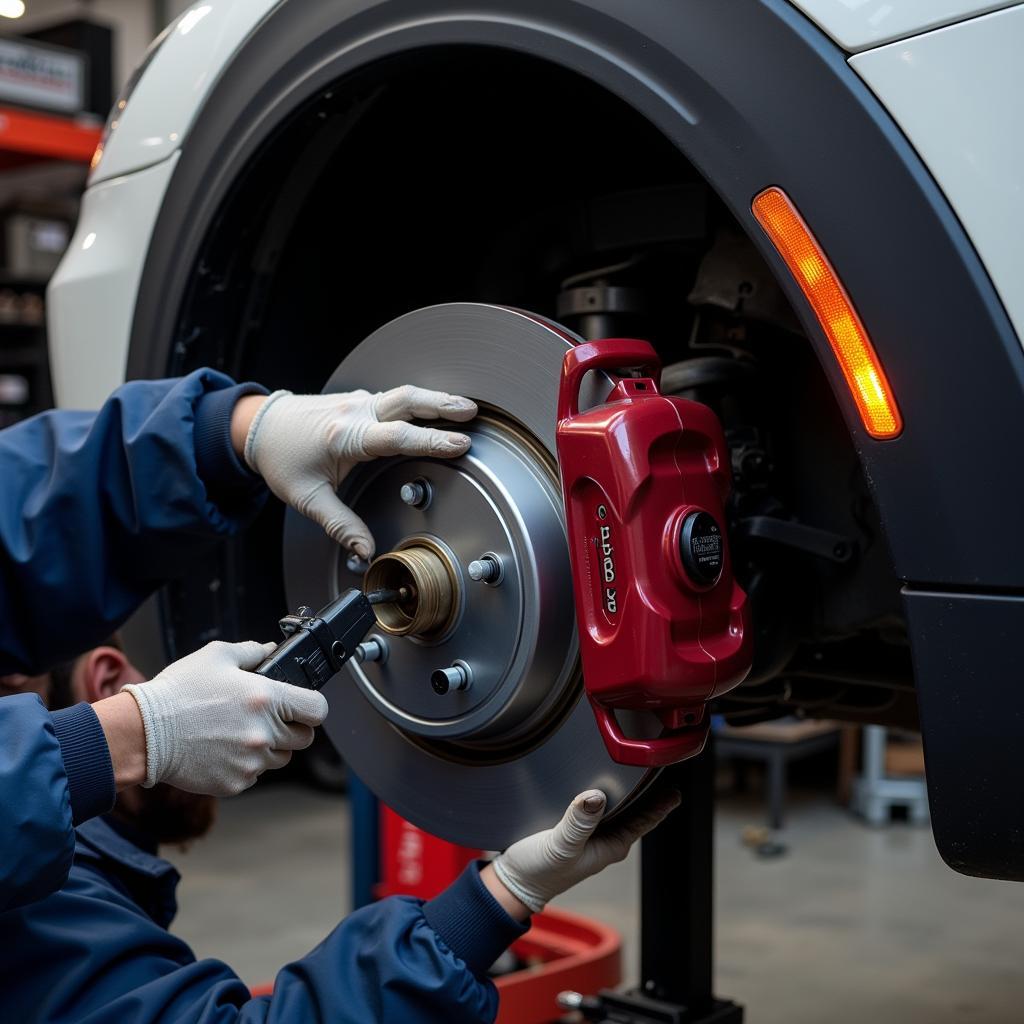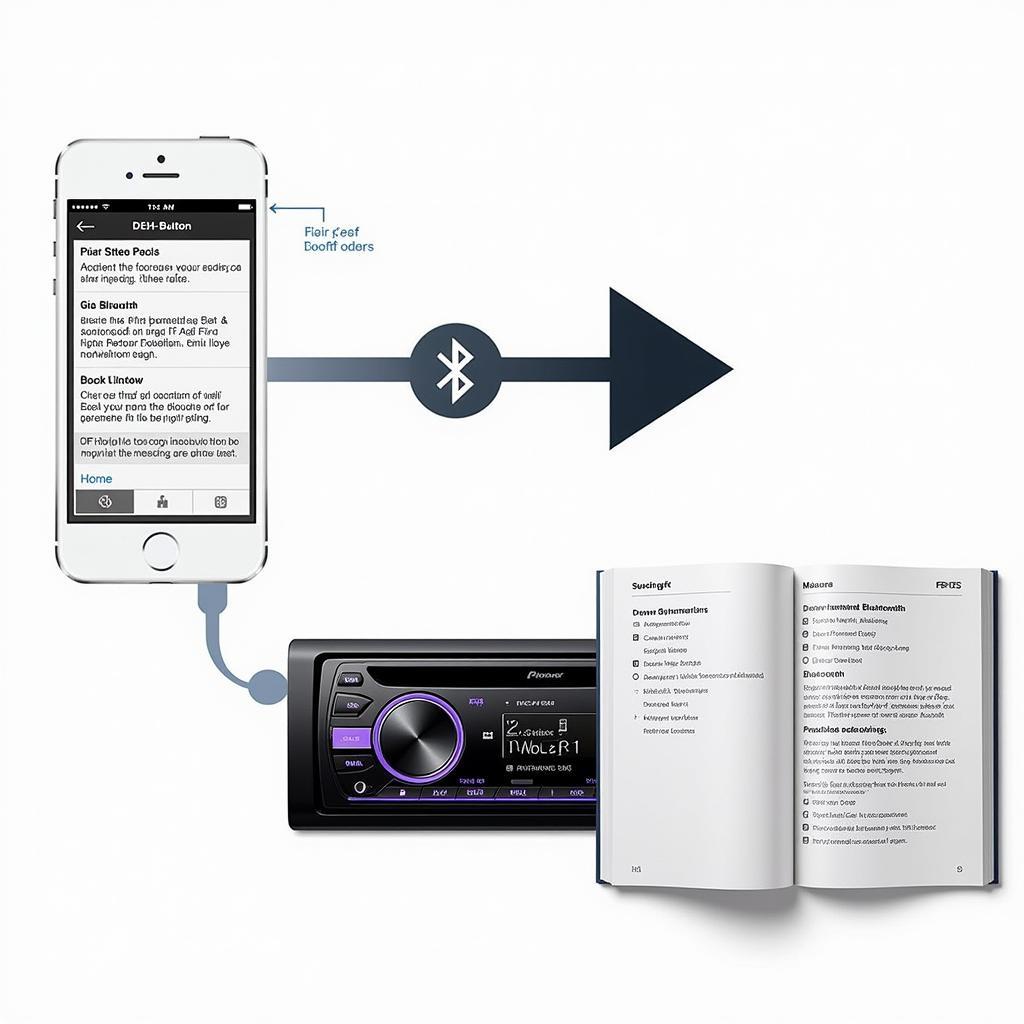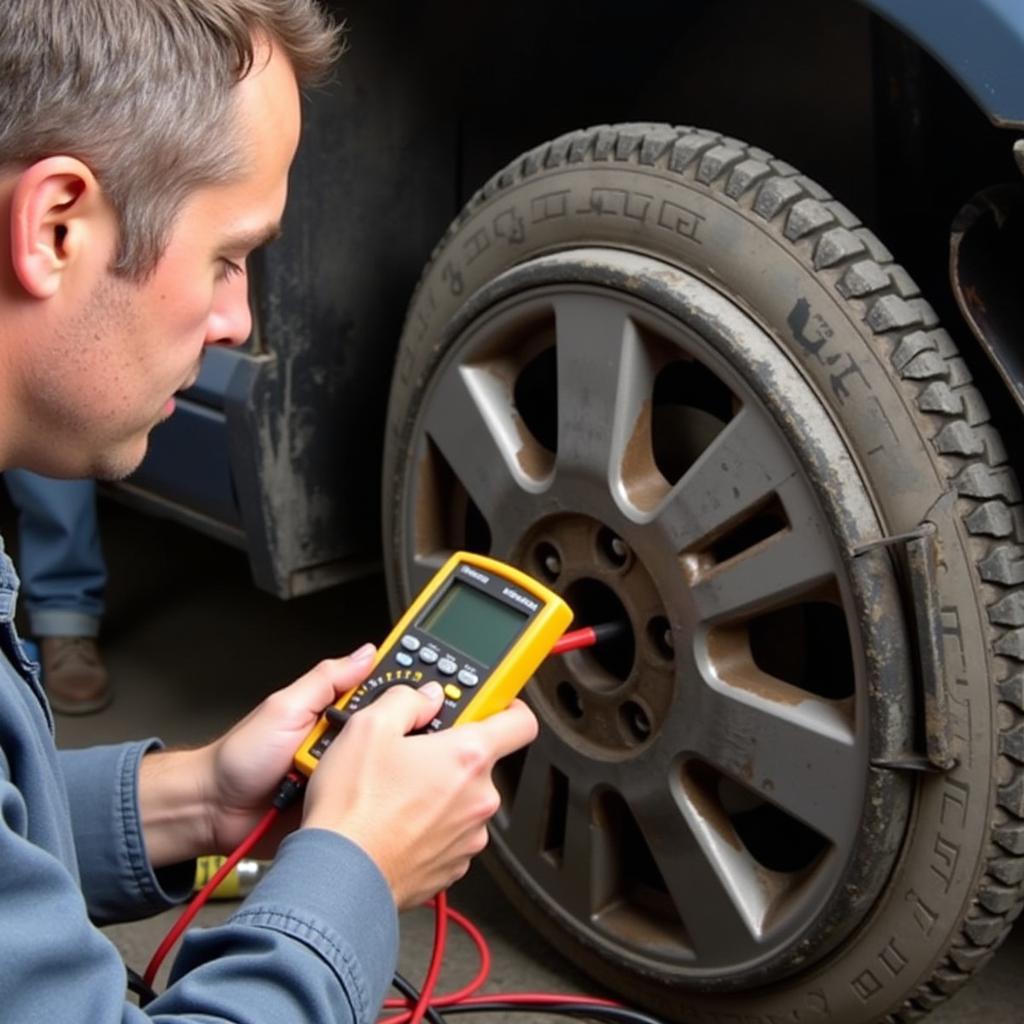The brake pad warning light on your 2006 Mini Cooper S is a crucial safety feature. When illuminated, it signals that your brake pads have worn down to a point requiring immediate attention. Ignoring this warning can lead to severely compromised braking performance, putting you and others at risk. This comprehensive guide delves into the common causes of a lit brake pad warning light on a 2006 Mini Cooper S and provides practical solutions for addressing them.
Understanding the Brake Pad Warning System
Your Mini Cooper S utilizes a straightforward system to monitor brake pad wear. A sensor, embedded within the brake pad itself, continuously measures the pad’s thickness. Once the pad wears down to a predetermined minimum thickness, the sensor triggers the warning light on your dashboard. This mechanism ensures you’re alerted well in advance of critically low brake pad levels.
Common Causes of a Lit Brake Pad Warning Light
While worn brake pads are the most common culprit behind a lit warning light, several other factors can trigger this signal on your 2006 Mini Cooper S:
- Worn Brake Pad Sensors: The sensors themselves can wear out or become damaged over time, leading to a false warning light.
- Damaged Brake Pad Wiring: A short circuit or break in the wiring harness connecting the sensor to the vehicle’s electrical system can interrupt the signal, causing the light to illuminate.
- Faulty Brake Fluid Level Sensor: While not directly related to brake pads, a malfunctioning brake fluid level sensor can sometimes trigger the brake pad warning light. This usually indicates a leak in the brake system.
- Issues with the Instrument Cluster: In rare instances, a problem with the instrument cluster itself can result in a false warning light.
 Brake Pad Sensor on a Mini Cooper S
Brake Pad Sensor on a Mini Cooper S
Troubleshooting a Lit Brake Pad Warning Light
Before assuming the worst, it’s essential to rule out simpler possibilities:
- Check the Brake Fluid Level: Ensure the brake fluid reservoir under the hood is filled to the appropriate level. If it’s low, there might be a leak in the system requiring immediate attention.
- Inspect the Brake Pads: If you’re comfortable doing so, visually inspect the brake pads through the wheel spokes. If they appear significantly thin, replacement is likely necessary.
 Worn Brake Pads vs. New Brake Pads
Worn Brake Pads vs. New Brake Pads
Seeking Professional Diagnostics and Repair
If you’re unsure about any aspect of brake system inspection or repair, it’s crucial to seek help from a qualified mechanic specializing in Mini Coopers. They have the expertise and tools to:
- Accurately diagnose the root cause of the warning light.
- Determine if brake pad replacement or other repairs are needed.
- Safely and correctly perform the necessary repairs.
 Mini Cooper Brake Repair
Mini Cooper Brake Repair
Expert Insight
“Ignoring a brake pad warning light can have serious consequences,” cautions John Miller, a seasoned Mini Cooper mechanic with over 20 years of experience. “Worn brake pads significantly reduce your stopping power, increasing the risk of accidents. Additionally, driving with worn pads can damage the brake rotors, leading to more costly repairs down the line.”
Conclusion
Addressing a lit brake pad warning light promptly is paramount for your safety and the longevity of your 2006 Mini Cooper S. By understanding the common causes and seeking professional assistance when needed, you can ensure optimal braking performance and peace of mind on the road. Remember, regular brake system inspections are crucial for preventative maintenance and can help avoid unexpected issues.


